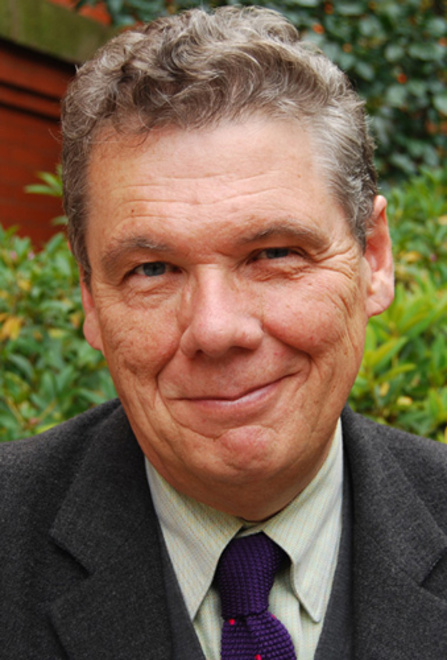Interview with Jeffrey Quilter — Research Fellow
Jeffrey Quilter (Research Fellow, February–April 2017) is the William & Muriel Seabury Howells Director of the Peabody Museum of Archaeology & Ethnology at Harvard University and a senior lecturer in the Department of Anthropology. Previously he had been the Peabody’s deputy director for curatorial affairs and curator for intermediate area archaeology. Quilter spent 10 years as the director of pre-Columbian studies and curator of the pre-Columbian collection at Dumbarton Oaks in Washington, D.C. His interests range widely within field archaeology experiences in the Americas, especially in Costa Rica and in Peru—he is perhaps best known for his team’s discovery of a lost language, written on a small piece of paper 400 years ago and excavated in 2008 at Magdalena de Cao, an early Peruvian colonial-period town. A native of New York City, he received his undergraduate degree from the University of Chicago and his doctorate from the University of California, Santa Barbara. His recent publications include
The Ancient Central Andes (Routledge, 2014);
Treasures of the Incas (Duncan Baird, 2011); and
The Moche of Ancient Peru: Media and Messages (Peabody Museum Press, 2010). At Bard Graduate Center, he is concentrating on his research interests in the prehistory of the North Coast of Peru.
Tell us a bit about your background and how you became interested in pre-Columbian culture.
When I was a child, my father and I regularly visited New York City museums from our home in Long Island City. My exposure to Britain’s past through trips to visit my maternal relatives was another strong influence. Between the two experiences, I went through the common childhood progression of fascination with Mesopotamia, Egypt, Ancient Greeks, Romans, etc. Other than the support of my parents, three events provided opportunities for a working class kid from Queens to become an archaeologist. The first was serving as a junior curator at the Brooklyn Children’s Museum, starting when I was 15. The second was in 1966, when I spent the summer in Peru via the BCM’s association with an exchange student program. The third was a New York City program to cost-share internships at non-profit organizations. Through that, I interned at the American Museum of Natural History in 1969 and 1971. These programs sustained and encouraged in my interests and for that I will always be grateful. Consequently, wherever I have been employed, I have been a strong supporter of similar programs. As for Peru, having been primed with an interest in antiquity, I was astounded and enchanted by its rich past and present peoples. And although I followed diverse interests for a decade after I returned from that eventful exchange student experience, I decided that I wanted to pursue Andean archaeology when I contemplated graduate school.
What attracted you to the Bard Graduate Center fellowship?
My Harvard colleague,
Ivan Gaskell, kindly invited me to present a talk at Bard Graduate Center in 2012. I was highly impressed with the diversity of interests of the programs, exhibits, and the people here. BGC is diverse and yet united in a common interest and a concern with the material world and the many different ways people relate to and through it. I delight in its seriousness combined with a sense of joy and common purpose in the pursuit of knowledge. I believe it is one of the most innovative and important research centers in operation today and I am greatly pleased and honored to be part of it for a while.
Tell us about your research plans here.
I applied stating that I would be working on an edited book on my archaeological and historical investigations of an early colonial-period town in northern Peru. I got ahead of myself, though, and the book is now in peer review. I still have to write a concluding chapter and being here will give me time to think that through and complete it. As the peer reviews come in, I also will be plenty busy with revisions. In the meanwhile, I am working on a project on the royal households of the ancient Moche (ca. 500 CE) of the North Coast of Peru as well as finishing up a research project on a collection at the American Museum of Natural History that I began during my first ever sabbatical in 1987.
What would be your advice to young researchers/students still trying to decide a career path for themselves, whether in academia or in the museums?
My eldest daughter graduated from the Longy School of Music the same year that it became part of Bard College. Leon Botstein gave a commencement address that was both inspiring and sobering in which he stated that a life in music is one well worth living but a hard and challenging one. I would echo the same words and sentiments for those with a passion for academics and museums. One must balance a love of scholarship with the practicalities of life and be fully aware of what one may have to give up or forego and be willing to do so. At the same time, it is good to remember that our learning enriches us in countless ways and while we may retire from a “job” we will never have to retire from a passion for the arts, academics, or museums.


